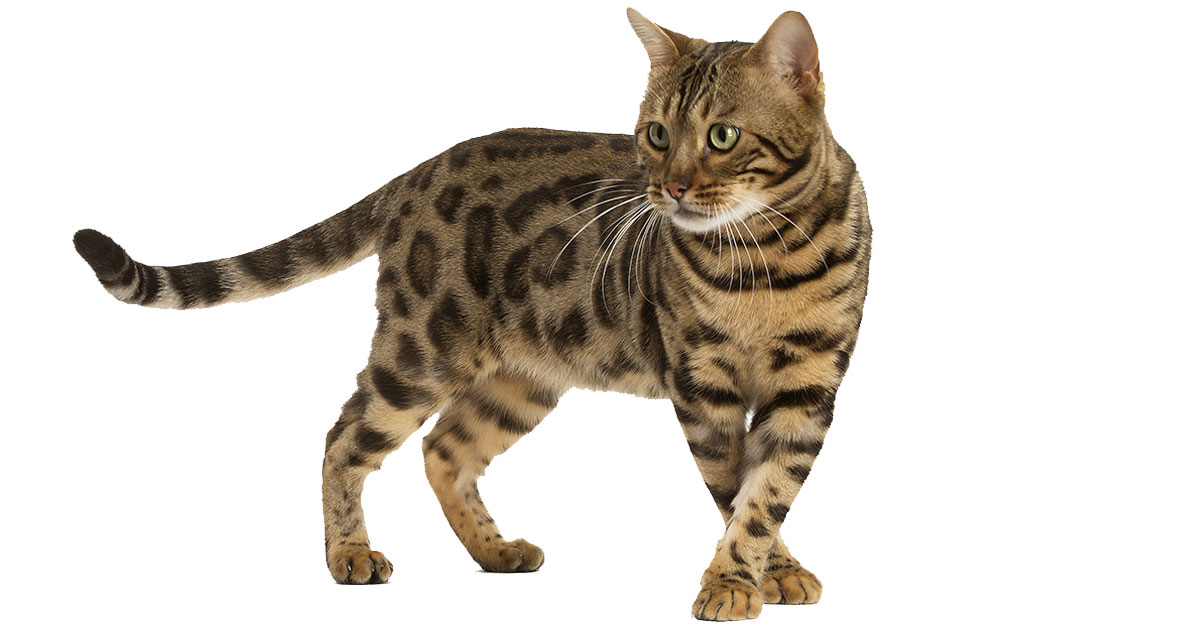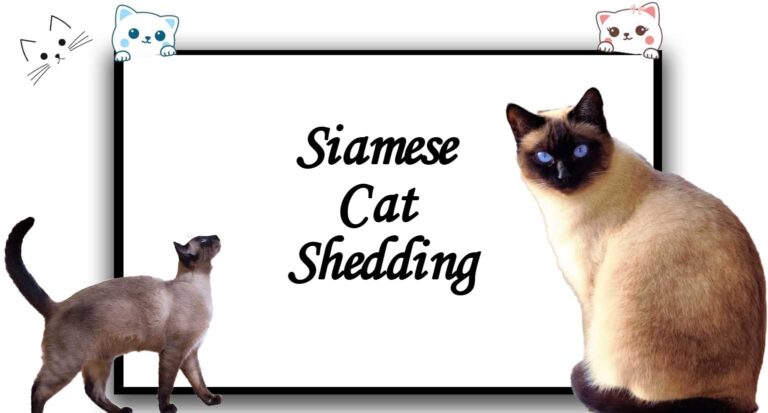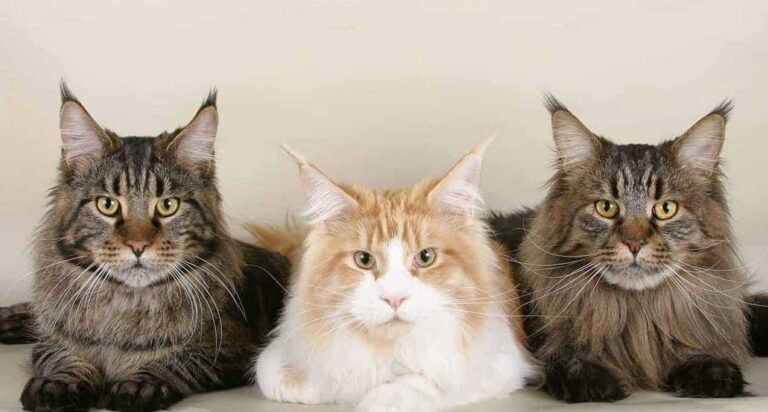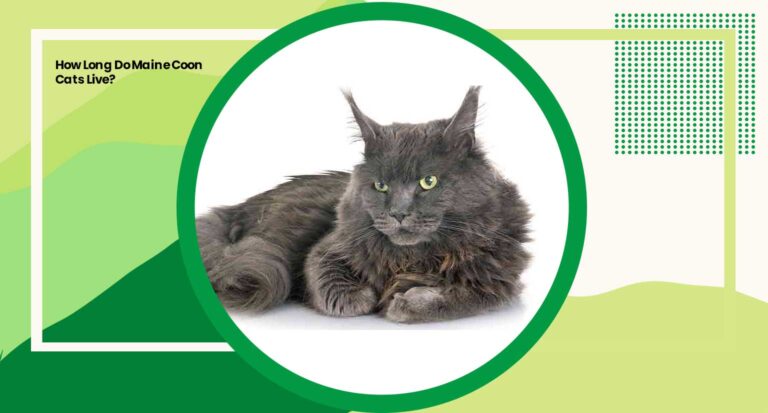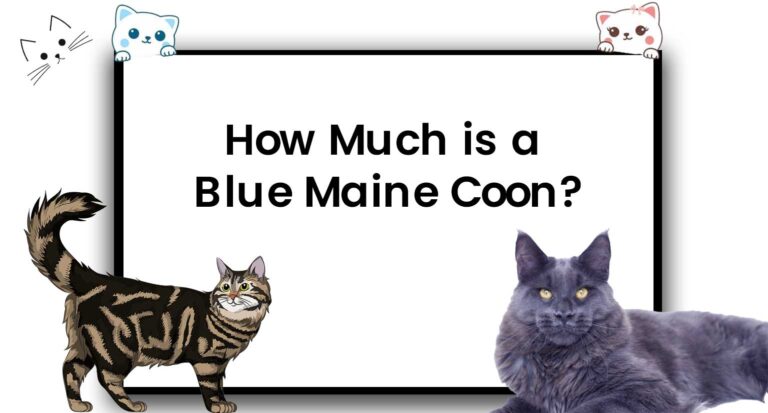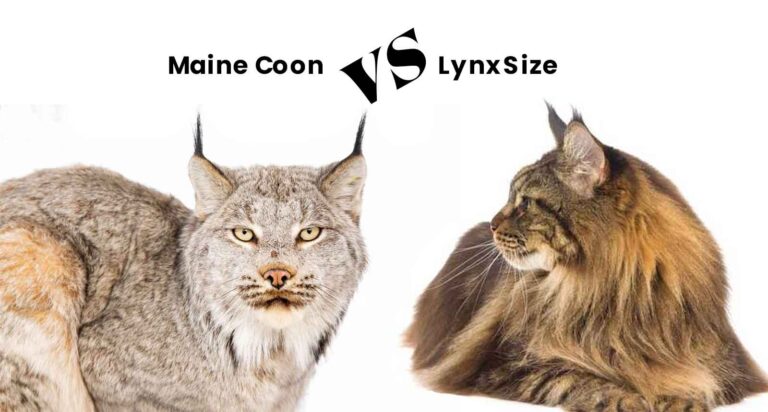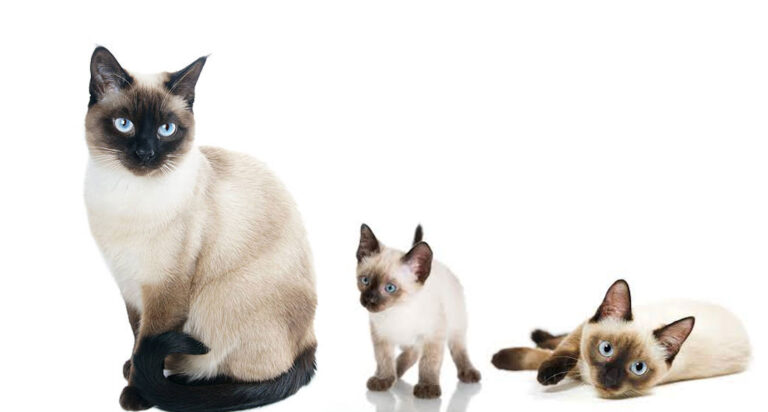Bengal Cat Life Expectancy
Known for their exquisite coat patterns and muscular bodies, Bengal cats have become one of the most attractive cat breeds in the United States. A relatively new breed, they are descendants of the wild Asian leopard cats, expertly crossed with domestic cat breeds by the visionary breeder, Jean Mill. This blend of the domestic and the wild has resulted in a breed that combines the charm of the domestic cats with the awe-inspiring beauty of their wild ancestors. But what does this mean for the Bengal cat life expectancy? How long do Bengal cats live? Let’s delve into the world of this fascinating breed, discussing factors that play a significant role in a Bengal cat’s lifespan, from health issues to the best diet and proper care needed to ensure a happy, healthy life.
Origins of Bengal Cats
The Bengal cat breed is a testament to the visionary work of Jean Mill, a breeder who aimed to combine the domestic appeal of house cats with the awe-inspiring beauty of wild felines. The Bengal breed is the result of careful breeding between domestic cat breeds and the wild Asian leopard cats, leading to a unique blend of domestic and wild traits.
This beautiful feline, officially recognized as Felis bengalensis, owes its name to the scientific term for its wild ancestor. Despite their jungle cat origins, Bengal cats have been bred to be friendly and sociable, retaining only the stunning coat patterns and muscular bodies of their wild forebears. These unique characteristics have made Bengal cats one of the most attractive cat breeds across the United States and beyond.
Bengal Cat Life Expectancy
The Bengal cat life expectancy is a topic of interest to many potential Bengal cat owners. This beautiful breed is not just appreciated for its coat color and patterns but also for its robust health and longevity. On average, the lifespan of Bengal cats ranges between 12 and 16 years. However, with proper care and attention, some Bengals have been known to live beyond this average.
Like all breeds, the life expectancy of a Bengal cat can be influenced by various factors, including genetic health concerns, diet, and lifestyle. Conditions such as hypertrophic cardiomyopathy and progressive retinal atrophy are some health issues known to affect the breed. However, with regular health check-ups and a proactive approach to their health care, Bengal cats can lead long, healthy lives.
While this breed’s life expectancy is in line with many domestic cat breeds, each Bengal cat’s lifespan can vary. Some may have a shorter lifespan due to health problems, while others live well into their late teens. Factors like the quality of veterinary care, a healthy diet, and regular exercise can significantly impact the individual Bengal cat’s life expectancy.
Factors Impacting Life Expectancy
Many elements can play a significant role in determining the Bengal cat’s life expectancy. Understanding these can help Bengal owners provide the best care for these enchanting felines and potentially increase their lifespan.
Health Issues
Like any other breed, Bengal cats are prone to certain health issues, including hypertrophic cardiomyopathy, progressive retinal atrophy, and patellar luxation. Regular health check-ups and prompt medical attention at any sign of these problems can help mitigate their effects and contribute to a longer, healthier life for your Bengal.
Diet
Bengal cats, like their wild ancestors, are obligate carnivores. A high-quality diet rich in protein is essential for their health. High-quality cat food, whether wet or dry, provides the nutrients they need for a healthy life. A balanced diet can help maintain a healthy weight and support the cat’s immune system, contributing significantly to the life expectancy of Bengal cats.
Exercise and Lifestyle
Bengals are active cats with a high prey drive. They require plenty of exercise to maintain their muscular bodies and avoid a sedentary lifestyle, which can lead to health problems. Plenty of toys, cat trees, and interactive play can help Bengal cats get enough exercise, promoting a long and healthy life.
Proper Care
Regular grooming, dental care, and litter box maintenance also play a crucial role in a Bengal cat’s health. Good hygiene can prevent numerous health concerns, contributing to a longer, happier life for your Bengal cat.
Genetics and Breeding
The genetic makeup of your Bengal cat and the conditions under which they were bred can impact their lifespan. Choosing a reputable breeder who prioritizes health and genetic testing can ensure you bring home a Bengal kitten free of hereditary diseases, setting the stage for a long, healthy life.
Indoor vs. Outdoor Living
The choice between indoor and outdoor living can play a significant role in the life expectancy of a Bengal cat. Indoor Bengal cats generally live longer than outdoor Bengals. Why is this? Indoor cats are not exposed to the same dangers that outdoor cats face such as traffic, exposure to diseases from other animals, harsh weather, and the risk of getting lost or stolen.
Moreover, the controlled environment of a home allows for a consistent, high-quality diet, regular human interaction, and immediate attention to any health concerns. However, this doesn’t mean indoor Bengals should lead a sedentary lifestyle. Ensuring they get enough exercise indoors, with the help of plenty of toys and cat trees, is crucial to their well-being.
Outdoor Bengal cats, on the other hand, have a wider range of experiences and arguably a more exciting life. They get plenty of exercise and stimulation but at the cost of increased risks. If you decide to allow your Bengal cat outdoors, consider a secured garden or an outdoor cat enclosure to provide a balance between freedom and safety. Remember, regular veterinary care is especially vital for outdoor cats to monitor for any signs of disease or injury.
Diet and Nutrition
The diet of a Bengal cat can greatly impact its life expectancy. These cats, descendants of wild Asian leopard cats, are obligate carnivores. They require a diet rich in high-quality protein to thrive. Both wet and dry food can fulfill their nutritional needs, as long as they are of high quality and specifically formulated for cats.
It’s important to understand that not all cat foods are created equal. Look for high-quality cat food that lists a source of animal protein as the first ingredient. Avoid foods with fillers, artificial colors, flavors, or preservatives. Cats also need a certain amount of fat in their diets, along with vitamins, minerals, and certain amino acids.
Monitoring your Bengal’s weight is also crucial. Overweight cats can develop a host of health issues, including diabetes, heart disease, and joint problems. Maintaining a healthy weight through a balanced diet and plenty of exercise can help your Bengal live a longer, healthier life.
Always remember to provide fresh water for your Bengal. While wet food can contribute to their hydration, it shouldn’t be the only source. Cats often don’t have a high drive to drink water, so keeping it fresh and appealing is essential to avoid dehydration.
Lastly, Bengal cats can have specific dietary needs at different stages of their life. Kittens, adults, and older cats all have unique nutritional requirements. Working with your vet to understand these needs can help ensure your Bengal cat’s diet supports their health and longevity throughout all their years.
Exercise and Activity
Due to their wild lineage, Bengal cats are known for their high energy levels and active nature. Ensuring they get plenty of exercise is essential to their overall health and can significantly contribute to their life expectancy.
Regular exercise helps to maintain their muscular bodies, prevent obesity, and provide mental stimulation. Bengals are known for their high prey drive, so toys that stimulate this instinct, such as feather toys or laser pointers, can provide both physical exercise and mental engagement.
Moreover, Bengals are excellent climbers. Cat trees and climbing shelves can allow them to exercise their climbing skills, even if they live indoors. Additionally, many Bengals enjoy water play, which can be another great form of exercise. Always supervise water play to ensure safety.
A lack of exercise can lead to obesity and boredom, which in turn can result in destructive behavior and health issues. Hence, providing your Bengal cat with plenty of toys, interaction, and opportunities to exercise is crucial for their well-being and can help extend their lifespan.
Common Health Issues and Care
While Bengal cats are generally healthy, they can be prone to certain health issues that potential owners should be aware of. These include genetic conditions such as hypertrophic cardiomyopathy, progressive retinal atrophy, and patellar luxation. Here, we will discuss these common health concerns and how they can be addressed.
Hypertrophic Cardiomyopathy
Hypertrophic cardiomyopathy (HCM) is a heart disease that can affect many breeds, including Bengals. It involves the thickening of the heart muscle, which can ultimately lead to heart failure. Regular veterinary check-ups can help detect HCM early and manage the condition.
Progressive Retinal Atrophy
Progressive retinal atrophy (PRA) is a genetic disease that gradually causes blindness. It’s essential for breeders to test for this condition, as affected cats should not be bred. While there’s currently no cure for PRA, cats with the disease can still lead a good quality life if their environment is kept consistent.
Patellar Luxation
Patellar luxation is a condition where the cat’s kneecap (patella) can dislocate or move out of its normal location. Mild cases may not affect the cat’s quality of life, but severe cases can lead to lameness and require surgery. Regular vet check-ups can help detect this condition early and provide appropriate treatment.
General Care and Preventive Measures
Beyond these specific conditions, regular veterinary care is crucial to a Bengal cat’s health. Routine check-ups, vaccinations, and preventative treatments for parasites can keep your Bengal in peak health. A nutritious diet, regular exercise, and maintaining a healthy weight are also critical aspects of general care.
Good dental hygiene is another important part of a Bengal cat’s care. Regular dental check-ups along with at-home dental care can prevent dental diseases that can impact a Bengal cat’s overall health. Grooming, although less of a concern due to the Bengal’s short, easy-care coat, is another aspect of general care, helping to keep the skin and coat healthy.
Providing a safe environment, especially for indoor cats, is equally important. This includes cat-proofing your home, providing safe toys, and ensuring the cat can’t escape to the outdoors unattended.
With proper care, regular health check-ups, and a lot of love, Bengal cats can enjoy a long, healthy life, bringing joy to their owners for many years.
Hypertrophic Cardiomyopathy
Hypertrophic cardiomyopathy, or HCM, is the most common form of heart disease in cats. It involves the thickening of the heart muscle, which can ultimately interfere with the heart’s ability to pump blood efficiently. In the Bengal breed, HCM can be a hereditary disease, with some cats genetically predisposed to develop the condition.
Symptoms of HCM can include rapid breathing, lethargy, loss of appetite, and in severe cases, sudden collapse. However, some cats with HCM may show no symptoms at all until the disease has significantly progressed. That’s why regular veterinary check-ups are essential for early detection and management of the condition.
While there is no cure for HCM, the condition can often be managed with medications to improve heart function and reduce the risk of blood clots. Early detection and treatment can significantly improve the quality of life and longevity for a Bengal cat with HCM. Bengal cat breeders should screen for this condition to reduce the risk of passing the gene onto kittens.
Progressive Retinal Atrophy
Progressive Retinal Atrophy (PRA) is an inherited eye disease that affects several breeds, including the Bengal cat. The disease is characterized by the bilateral degeneration of the retina, leading to progressive vision loss and ultimately blindness. It’s a genetic disorder, and affected cats are often born with normal vision but start losing sight as they mature.
Typically, the first sign of PRA is an inability to see in low light or at night, known as night blindness. As the disease progresses, daytime vision also deteriorates. It’s essential to note that while PRA leads to blindness, it is not painful, and cats with the disease can still lead a quality life if their environment is kept consistent.
Unfortunately, there is currently no treatment or cure for PRA. However, genetic testing can identify carriers of the condition, helping breeders to prevent passing on the disease to future generations. If you’re considering a Bengal kitten, choose a responsible breeder who screens for this and other genetic disorders.
Cats with PRA can adapt well to their decreasing vision, especially if they are kept in a familiar environment. Keeping their surroundings consistent and predictable will help them navigate and live comfortably, even with reduced vision.
Patellar Luxation
Patellar luxation, sometimes referred to as a ‘trick knee’, is a condition where the cat’s kneecap (patella) can dislocate or move out of its normal location. This is a health concern that can affect the Bengal breed. It varies in severity, with mild cases often causing the cat little to no discomfort, and severe cases leading to lameness and significant pain.
Symptoms can include intermittent lameness, abnormal hind limb movement, difficulty rising, and reluctance to jump or play. It’s diagnosed through a combination of physical examination and x-rays by a vet.
While mild cases may require no treatment, severe patellar luxation can necessitate surgery to correct the alignment and prevent further joint damage. Post-surgery, most cats can return to normal activity levels.
Regular veterinary check-ups are crucial in catching this condition early. If you notice any change in your Bengal’s movement or behavior, it’s essential to consult with a veterinarian promptly. Early diagnosis and appropriate treatment can prevent the progression of the condition and ensure your Bengal cat maintains a high quality of life.
Hereditary Diseases and Conditions
As with any breed, Bengals are predisposed to certain genetic diseases. This is due to the relatively small genetic pool from which they originated, as they’re a relatively new breed. Responsible breeding practices, including genetic testing and selective breeding, can help minimize the occurrence of these hereditary diseases.
Some hereditary conditions that may affect Bengal cats include hypertrophic cardiomyopathy, progressive retinal atrophy, and patellar luxation, as discussed earlier. Another genetic condition, known as autosomal recessive disorder, can cause a crinkled or “wavy” coat in Bengal kittens.
It’s crucial to remember that hereditary does not mean inevitable. Just because a breed is predisposed to certain conditions doesn’t guarantee an individual cat will develop them. Regular veterinary care, a healthy diet, and a suitable environment can greatly enhance a Bengal cat’s quality of life and potentially prevent the onset of hereditary conditions.
When choosing a Bengal kitten, it’s advisable to select a reputable breeder who prioritizes health and temperament over physical characteristics. Reputable breeders will screen their breeding cats for genetic diseases and will be transparent about the health of their lines.
Investing in preventive care, being aware of potential health concerns, and providing a nurturing environment can help ensure your Bengal cat leads a long, happy life.
Bengal Cat Breed Characteristics
Bengal cats are one of the most distinctive and attractive cat breeds. Their physical appearance, behavior, and temperament set them apart and make them a favorite among cat enthusiasts. These cats carry the wild grace of their ancestors combined with the gentle nature of domestic cats.
Physical Characteristics
Bengal cats are medium to large-sized cats, with males typically larger than females. They have muscular bodies, broad heads, and pronounced cheekbones. Their back legs are slightly longer than their front legs, giving them a wild appearance.
One of the most striking characteristics of the Bengal cat is their coat. It is short, dense, and incredibly soft to the touch. The coat can come in several colors and patterns, including spotted or marbled, and in colors ranging from brown, silver, and even blue. The patterns are usually in contrast with the background color, giving the coat a vibrant and striking appearance.
Behavior and Temperament
Known for their high energy levels and playful nature, Bengal cats require plenty of stimulation. They enjoy interactive toys and games and love to climb and explore their surroundings. Some Bengals even show an affinity for water, a trait not commonly found in domestic cat breeds.
Bengals are intelligent and curious cats. They can often be found investigating their surroundings and can be trained to learn tricks, use a litter box, and even walk on a leash.
Despite their wild ancestry, Bengals are affectionate and friendly cats. They form strong bonds with their human families and get along well with other pets when properly socialized.
With their beautiful coats, engaging personalities, and affectionate nature, Bengals make for a truly unique pet. However, prospective Bengal owners should remember these cats require plenty of mental and physical stimulation to keep them happy and healthy.
Physical Features
Bengal cats are well-known for their distinctive physical attributes that set them apart from most other domestic cat breeds. These unique features, reminiscent of their wild ancestors, combined with the manageable personality of domestic cats, make Bengals an appealing choice for cat lovers.
Size and Weight
Bengals are medium to large-sized cats, with a muscular and robust body structure. Male Bengal cats typically weigh between 10 to 15 pounds, while females are slightly smaller, usually weighing between 8 to 12 pounds. Despite their strong build, Bengals have an agile and graceful demeanor.
Coat and Color
The Bengal’s coat is arguably one of its most captivating features. It is remarkably soft, thick, and comes in a variety of colors and patterns. The most common patterns are spotted and marbled, with the spots being akin to those found on a leopard. The color of the coat can range from golden and brown to silver and even charcoal, giving each Bengal cat a unique aesthetic appeal.
Eyes and Ears
Bengal cats have large, almond-shaped eyes that can be blue, green, or golden. Their eye color usually complements their coat. Bengals’ ears are medium-sized, wide at the base, and slightly rounded at the tips.
Body and Legs
The body of a Bengal cat is muscular and elongated, displaying their athleticism and strength. They have strong bones, and their hind legs are slightly longer than the front legs, giving them an exceptional ability to leap and climb.
Tail
The tail of a Bengal cat is thick, tapering to a point, and medium in length. It usually features rings around it that end in a solid tip that complements the coat’s primary color.
Overall, the Bengal cat embodies an exceptional combination of strength, agility, and beauty. These beautiful felines’ physical features are a testament to their unique genetic heritage, capturing the essence of their wild ancestry.
Coat Patterns and Colors
One of the most stunning characteristics of the Bengal cat is its magnificent coat, which exudes an exotic allure. Whether you’re drawn to the distinct marbling or the signature leopard-like spots, the Bengal’s coat is a spectacle of nature’s artistry. Let’s delve into the unique coat patterns and colors that Bengal cats are celebrated for.
Patterns
Bengals have two primary coat patterns:
- Spotted: The spotted pattern is the most recognizable in Bengals, giving them their characteristic “wild” appearance. The spots can be large or small, uniformly distributed or in clusters, and are typically in stark contrast to the base color. Some Bengals feature rosettes – spots with a lighter color inside, similar to those seen on leopards and jaguars.
- Marbled: The marbled pattern is less common but equally beautiful. Instead of spots, the coat features swirling patterns or streaks of color that can appear as though the cat has been sculpted from marble. The key to a high-quality marbled pattern is contrast and complexity, rather than simply a blending of colors.
Colors
The color of a Bengal cat’s coat can vary considerably. The following are some of the most common:
- Brown: This is the most common color in Bengals. The hue can range from a cold-toned light gray to a warm tawny, and the spots or marbling are usually black or dark brown.
- Silver: A silver Bengal has a nearly white base coat with dark grey to black markings. This striking contrast makes the silver Bengal quite sought after.
- Blue: This is a rare color variant, where the Bengal cat has a soft blue-grey coat with darker slate-blue markings.
Regardless of the pattern or color, what truly distinguishes the Bengal’s coat is its unique “glitter” effect. This is a sheen that makes the coat appear as if it has been dusted with gold or pearl, giving it a radiant glow in the sunlight. Not all Bengals have this glittering effect, but it’s highly prized when present.
The beauty of a Bengal cat’s coat, combined with its graceful movement and engaging personality, creates a truly captivating companion, befitting its wild ancestry.
Selecting a Reputable Breeder
Choosing to welcome a Bengal cat into your family is an exciting decision, and selecting a reputable breeder is a critical first step. A responsible breeder is dedicated to producing healthy, well-socialized kittens and preserving the unique qualities of the Bengal breed. Here are some key points to consider in your search.
Health Testing
A reputable breeder will prioritize the health of their cats above all else. They should conduct health screenings and genetic tests to reduce the likelihood of hereditary diseases, such as hypertrophic cardiomyopathy and progressive retinal atrophy. Be sure to ask for health records and clearances of the kittens’ parents.
Breeding Practices
Good breeders will demonstrate a thorough understanding of the Bengal breed’s genetic traits. They will breed selectively, aiming to enhance positive traits and minimize health risks. Kittens should not be separated from their mother before eight weeks of age, and a reputable breeder will not overbreed their cats.
Environment
The environment where the kittens are raised has a significant impact on their temperament and health. Ideally, kittens should be raised in a clean, nurturing environment, well-socialized with humans and other animals.
Documentation
A responsible breeder will provide all necessary documentation, including a health guarantee, vaccination records, pedigree papers, and a contract defining the terms of sale. They should be registered with cat breeding associations, like The International Cat Association (TICA) or the Cat Fanciers’ Association (CFA).
Post-Adoption Support
A reputable breeder will be there to support you even after you’ve taken your kitten home. They should be willing to answer questions and provide advice about caring for your new Bengal cat, demonstrating a commitment to their kittens’ lifelong well-being.
Remember, a good breeder’s aim is to advance the breed’s best qualities. By choosing a reputable Bengal cat breeder, you’re more likely to adopt a healthy, well-adjusted kitten that will grow into a cherished companion for years to come.
Creating a Healthy Environment for Your Bengal Cat
Providing a stimulating and nurturing environment for your Bengal cat is crucial to ensure its well-being and longevity. These cats have a high energy level and a curious nature, which means they thrive best in a home that caters to their physical and mental stimulation needs. Here’s how to create a healthy environment for your Bengal cat.
Physical Space
Bengals are active and agile cats. They love to jump, climb, and explore, so consider creating vertical spaces in your home, like cat trees or wall shelves. These can act as a safe haven for your cat and provide an excellent vantage point for surveying their territory.
Interactive Play
With a high prey drive inherited from their wild ancestors, Bengal cats require plenty of toys to keep them entertained. Interactive toys, puzzle feeders, and laser pointers can provide the necessary mental stimulation and fulfill their hunting instincts. Regular play sessions will also help form a strong bond between you and your Bengal cat.
Diet
Feeding your Bengal a balanced, high-quality diet is essential for maintaining optimal health. Since Bengals are obligate carnivores, their diet should be rich in animal proteins. Both wet and dry food can be used, but ensure the food you choose meets their nutritional needs. Fresh water should be readily available at all times.
Litter Box
Bengals are fastidious creatures and will appreciate a clean litter box. Consider having more than one litter box if you have a large home or multiple cats. The litter box should be regularly cleaned to maintain hygiene standards.
Health Care
Regular veterinary check-ups, vaccinations, dental care, and parasite control are crucial to a Bengal’s health. Your vet can provide personalized advice based on your cat’s age, health, and lifestyle.
Social Interaction
Bengal cats are social creatures. They enjoy the company of their human family members and even other pets. Spend time each day interacting with your Bengal to build a strong bond and keep them content.
Creating a healthy, stimulating environment for your Bengal cat is not only beneficial for their well-being, but it also contributes significantly to their life expectancy. These beautiful felines bring joy, companionship, and a touch of the wild to our homes.
Proper Diet and Nutrition
Bengal cats, like their wild ancestors, are obligate carnivores. This means they require a diet high in animal protein for optimal health and longevity. Here’s how to ensure your Bengal cat receives the right diet and nutrition.
High-Quality Protein
Protein should be the primary component of your Bengal’s diet. High-quality cat food, whether wet or dry, should list an identifiable source of animal protein like chicken, turkey, beef, or fish, as the first ingredient. Avoid foods that rely heavily on fillers like corn, wheat, or soy, as they provide fewer nutrients.
Wet and Dry Food
Both wet and dry foods have their advantages. Wet food, often a favorite among cats, provides hydration and is typically higher in protein. Dry food, on the other hand, is convenient and can help keep your cat’s teeth clean. Feeding a mix of both can offer a balanced approach to your cat’s diet.
Portion Control
Bengal cats are active and muscular, but they can still gain weight if they consume more calories than they expend. Overfeeding can lead to obesity and related health issues. Follow feeding guidelines on food packaging and adjust as needed based on your cat’s age, weight, and activity level.
Hydration
Proper hydration is critical for your Bengal cat’s health. Always provide fresh water for your cat, especially if their diet is primarily dry food. Some Bengals enjoy drinking from a running source, so consider a cat water fountain to encourage hydration.
Special Dietary Needs
Keep in mind that kittens, adults, and older cats have different nutritional needs. Kittens require more protein and fat for growth, while seniors might need a diet lower in calories but rich in fiber and essential nutrients. Always choose food suitable for your cat’s life stage.
A proper diet and nutrition can significantly enhance your Bengal cat’s quality of life and contribute to a longer, healthier lifespan. Consult with your veterinarian for personalized feeding advice to ensure your cat’s dietary needs are being met.
Exercise and Mental Enrichment
With their high energy levels and curious nature, Bengal cats require both physical exercise and mental stimulation to thrive. Regular exercise helps maintain a healthy weight and prevents behavioral issues, while mental enrichment keeps their minds sharp and engaged. Let’s delve into how to provide your Bengal with ample exercise and mental enrichment.
Physical Exercise
Engage your Bengal in interactive play sessions daily. Use toys that mimic the movement of prey, such as feather wands or laser pointers, to stimulate their hunting instincts. Cat trees, climbing posts, and scratching posts can provide opportunities for climbing and scratching, satisfying their natural behaviors. If possible, supervised outdoor time in a secure area can be a great source of physical stimulation.
Mental Stimulation
Bengal cats are highly intelligent, and they need mental stimulation to prevent boredom and potential behavioral issues. Puzzle toys and feeders can be a great way to challenge them mentally and slow down their eating. Rotate toys regularly to keep things interesting and new for your cat. Training sessions, such as learning tricks or using a litter box, can also provide mental enrichment.
Environmental Enrichment
Creating an enriched environment can go a long way in keeping your Bengal cat happy. Provide vertical spaces for climbing, hiding spots for privacy, and window views for bird watching. Interactive cat furniture, such as tunnels or interactive toys, can also add variety and excitement to their environment.
By providing your Bengal with plenty of exercise and mental stimulation, you can ensure they lead a healthy, satisfied life. Remember that every Bengal is unique, so it’s important to tailor the activities to your individual cat’s preferences and needs.
Care for Older Cats
As your Bengal cat ages, its needs will inevitably change. They may not be as agile as they once were, and their dietary requirements may shift. Here’s how to ensure your older Bengal cat remains happy, healthy, and comfortable in its later years.
Dietary Changes
As your cat ages, its metabolism may slow down. To prevent weight gain, you may need to adjust their caloric intake. Consult your veterinarian to determine the best diet plan for your senior cat. They may recommend a diet that is lower in calories but higher in fiber, along with essential nutrients for older cats.
Regular Veterinary Check-ups
Regular veterinary care becomes increasingly important as your Bengal ages. Senior cats should have veterinary check-ups at least once every six months. Regular blood work, dental check-ups, and weight monitoring can help detect potential health issues before they become severe.
Accommodating Mobility Changes
Some older cats may experience arthritis or other joint issues that can affect their mobility. Provide comfortable resting areas that are easy to access, and consider pet-friendly ramps or steps if your cat enjoys high places. Heated beds can also provide comfort for achy joints.
Stimulating Mental Health
Just like humans, cats can experience cognitive changes as they age. Continue to provide mental stimulation through gentle play, interactive toys, and puzzles. Regular interaction and petting can also help keep their mind sharp and prevent anxiety and depression.
Regular Grooming
Regular grooming is essential for older cats, especially those that may struggle with self-grooming due to arthritis or other health issues. Regular brushing can help prevent hairballs and matting, while dental care remains essential.
Caring for an older Bengal cat requires patience and understanding, but with the right care, your Bengal can enjoy their golden years in comfort and health. After all, older cats offer just as much love and companionship as their younger counterparts.
Related Articles:

